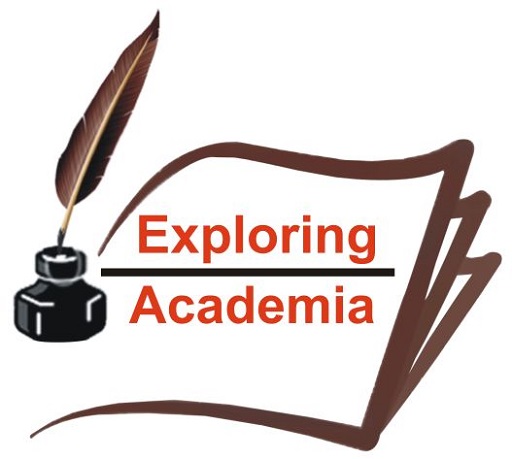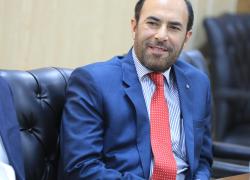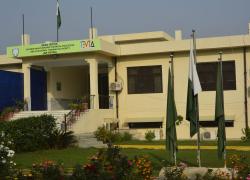Learning from a sample PhD Research Proposal: A step by step guide.
Developing a PhD Research Proposal is a pivotal step towards delving into scholarly inquiry, shaping the trajectory of one’s academic journey and contributing to the body of knowledge. Doctoral candidates incessantly look for a sample PhD research proposal to serve as a blueprint, illuminating the intricacies of their research endeavor to contribute meaningfully to their chosen field through rigorous research and inquiry.
In this blog post, I share a sample PhD Research Proposal that may serve as a starting point for doctoral candidates’ scholarly pursuit. This sample research proposal represents not only a culmination of years of my academic endeavor but shall also provide a gateway to the doctoral candidates to unlock new insights, push the boundaries of existing knowledge and make a tangible impact in the academic community and beyond.
Starting from the title, this write-up presents the content of my PhD research proposal in an abridged form as per following format:
Title
Abstract
- Introduction
- Context of the study-higher education dynamics in Pakistan.
- Statement of the problem.
- Rationale of the study and evolution of the research questions.
- Research Questions.
- Objectives of the study.
- Context of the study-higher education dynamics in Pakistan.
- A brief review of literature
- An overview of Human Resource Management.
- HRM in the public sector.
- HRM in the public sector in Pakistan.
- An overview of HRM in universities.
- HRM in the universities in Pakistan.
- Recruitment and Selection.
- Recruitment and selection in the universities in Pakistan.
- The gaps in literature and propositions.
- An overview of Human Resource Management.
- Theoretical Framework.
- General Systems Theory.
- General Systems Theory and its application to diverse disciplines.
- General Systems Theory and its application to organization.
- General Systems Theory and its application to HRM.
- Application of General Systems Theory to recruitment and selection
- Methodology
- Case Study
- Case Selection and Design
- Data Collection
- Interview
- Observations
- Documents and archival records.
- Interview
- Data Analysis.
- Ethical considerations.
- Case Study
- Informed consent
- Autonomy
- Privacy and confidentiality
- Significance, expected outcome and contribution of the study.
- Implications of the study.
- Outline of the Thesis.
Title:
An Exploratory Study of Recruitment and Selection of Administrative Staff in the Public Sector Universities of Khyber Pakhtunkhwa, Pakistan.
Abstract
Contemporary discourse on recruitment and selection underpins the researchers’ argument in articulating that staffing function does not take place in isolation in any organization. This is influenced, not only by internal factors but also by external environmental forces. While undertaking staffing function in any setting, HR managers must be cognizant that they select the right person for the right job as the critically important function set the stage for other human resources subsystems to pragmatically and smoothly function.
Using General Systems Theory as a theoretical lens, this qualitative study shall investigate the system of recruitment and selection in the public sector universities in Khyber Pakhtunkhwa, Pakistan with a focus on administrative staff. Data shall be collected through in-depth interviews with purposefully selected participants and thematic analysis shall be undertaken to analyse the data to unearth how the system of recruitment and selection has been designed in the public sector universities.
Furthermore, this multiple case study shall identify loopholes in the system of recruitment and selection in the universities and will pinpoint the major factors responsible for the bottlenecks that need to be addressed if the institutions of higher education were to meet emerging challenges of the competitive academic world and growing expectations of all stakeholders. The study shall conclude with recommendations, how the system of recruitment and selection in public sector universities may be improved.
1.Introduction
This empirical study is aimed at investigating how the system of recruitment and selection is designed in the public sector universities by carrying out a comprehensive scrutiny of the current employment practices, investigating major problem areas, nd various factors responsible for these loopholes which need to be addressed if the institutions of higher education were to meet challenges of the competitive academic world and growing expectations of the stakeholders.
1.1 Background
The growing forces of globalization and increasing significance of emerging market economies advocate strongly that success of managers in the contemporary world rests on the degree to which they grasp a deep understanding of the issues confronted by organizations while managing human resources (Budhwar & Debrah, 2001).
For effective management of human resources, organizations require a sound Human Resource Management system. The HRM system is defined as “a set of distinct but interrelated activities, functions, and processes that are directed at attracting, developing, and maintaining (or disposing of) a firm’s human resources” (Lado & Wilson, 1994:701). An effective HRM system requires interconnected and dependent subsystems to work in harmony for its smooth functioning. HR subsystems connote those relationships and interactive activities ingrained in a larger organizational context which is aimed at managing the pool of human resources and making sure that these resources are utilized in the most effective and efficient manner so that strategic goals of the organization may be accomplished (Tiwari & Saxena, 2012:671).
The paramount HR subsystems include recruitment and selection, training and development, compensation, career development, performance evaluation, working environment and succession management to mention a few. Each of these subsystems has its own peculiar dynamics and significance. Amongst them, the most exigent is recruitment and selection. Recruitment is the process through which organizations hunt for potential applicants intended for productive employment while selection implies the process by which organizations attempt to identify the most suitable candidates with the desired knowledge, skills and ability to perform the desired tasks to help the organization realize its goals (Searle, 2009:151).
Concerted efforts aimed at reforming employment management practices were underway in developed countries for the last couple of decades. These initiatives were primarily set off by financial crisis confronted by both developed as well as developing economies. The role of the state was challenged for mismanagement and bad governance and the efficacy of service delivery system in the public domain came under enormous pressure. Hence, the public sector was censured severely for its lack of efficiency, transparency and flexibility. HRM has become one of the central themes of the public sector reform agenda (Colley, McCourt & Waterhouse, 2012:508; Gray & Jenkins, 1995: 80; Organization for Economic Cooperation and Development, 2009:30).
Indeed, HRM is at the embryonic stage in Pakistan (Khilji, 2001:250), the case with the public sector universities is not much different. Since inception, much attention was not paid to the management of human resources in the higher education sector. With mushroom growth of universities, the HR problems confronted by these academic bodies multiplied with the passage of time. The traditional HR department, regarded as Establishment Section, in the universities used to be grossly deficient in having the requisite skilled and experienced HR professionals. Recruitment and selection was not conducted in a systematic manner. Training and development of employees were undertaken in the most orthodox fashion. Career development opportunities were scarce and infrequent. Pay was not performance based and performance appraisal was equally defective. Nevertheless, serious and sincere efforts were not undertaken in the past to revamp, redesign and restructure the same, to put it according to the changing needs of the globalized world. To be brief, HR was found to be one of the most neglected areas in the public sector universities in Pakistan (Abbas & Ahmad, 2011:21; Qadeer, Rehman, Ahmad & Shafiq, 2011:230).
Over the years, much attention has not been paid to evolve HRM system in the universities. The scenario of staffing function is not much different. Especially, the recruitment and selection system of administrative staff remained overlooked. Having taken for granted, this area remained grossly deficient and out-rightly neglected. In fact, the system of recruitment and selection of administrative staff has not received the desired level of attention and consideration. It remained controversial for being non-meritocratic, asymmetrical and even unlawful (Husain, 2007:1; Khilji, 2001:104). This area received little attention from academics, researchers and scholars despite its overall significance.
This study shall investigate the prevailing employment practices in the six public sector universities of Khyber Pakhtunkhwa with prime focus on recruitment and selection system of administrative staff. This multiple case study research shall unveil numerous loopholes in the prevailing system of recruitment and selection in the public sector universities in the province and makes several recommendations in light of which the system of recruitment and selection system of administrative staff may be revived in the institutes of higher education in the country.
1.2 Context of the study-higher education dynamics in Pakistan
Institutions of higher education exist in all kinds of configurations, sizes and shapes (Edgley-Pyshorn & Huisman, 2011:610). Universities are generally esteemed as “communities of scholars researching and teaching together in collegial ways” (Deem, 1998:47). University is a seat of advanced learning, a meeting place for researchers, scholars, academicians and academic workers where students pursue their higher studies after school or college level education. It is an intellectual center of the highest level offering various academic programs and different schemes of studies for graduate and postgraduate students (Ahmad & Junaid, 2008:501).
It is essential to have a background understanding of the landscape in which higher education sector operates in Pakistan. The contemporary higher education system in Pakistan is fundamentally influenced by its historical traditions (Altbach, 2004:15) and the Universities in Pakistan have a robust colonial legacy Rahman (1998:669).
At the time of creation of Pakistan in 1947, there was only one university functioning in Pakistan, namely University of Punjab established by the British rulers (HEC, 2013; Rahman, 1998:672). The rationale for setting up a university, in this part of the world, was that many British officers, essentially, felt that the cost of running the administration would substantially decrease if the lower level jobs were given to the Indians. And secondly, to appease the concerns of the Indians as they were left frustrated and got alienated from the British rule by the fact that they were debarred from all offices of trust, lucre and authority. Therefore, the colonial masters desired that the Indians should be educated —“educated to be westernized — and employed under British superiors” (Rahman, 1998:670). Altbach (2004:17) argues that the aim of the colonial university was to train obedient and loyal civil servants to serve the colonizers. This system of governance, subservient administrative arrangement, docile academic models and pliable managerial practices influenced from the British era persisted in universities in Pakistan with cosmetic changes even today (Altbach, 2004:15).
Sharp increase has been recorded in the number of universities established, both in public as well as private sector, in Pakistan during the last two decades. The public sector universities are government chartered, self-governing autonomous bodies funded by the Government of Pakistan through HEC. According to Hayward (2009:19), universities and institutions of higher education remained, largely, neglected in Pakistan throughout, its history. “The crisis in higher education was acknowledged as early as 1947, followed by more than a dozen commissions and policy document s. In 1998, some small steps were finally taken to improve access by increasing the number of higher education institutions from 18 to 78 and encouraging private higher education”. Major changes took place, in the sector with Musharraf’s takeover and the establishment of HEC in 2002, development budget of higher education has risen exponentially, and the number of new universities increased manifold.
Hence, based on the dates of inception, space, diversity of programs offered, availability of internet and video conferencing facilities, these universities can be classified into two broad categories of universities (i.e. the first generation and second generation universities).
The ‘first generation’ of these universities were established since 1947 till 2002 (before the establishment of HEC). The ‘second generation’ comprises of those universities, established in the last 10 to 15 years. The ‘first generation’ of these universities are marked by spacious flat buildings, serene academic environment, intellectual richness, outdated libraries, on-campus residency, little automation and a vast pool of imaginative students. University of the Punjab University of Peshawar, and Quid-e-Azam University, Islamabad are few among those. The ‘second generation’ comprises of those universities, established in the last ten to fifteen years. These are distinguished, mainly, by multistory buildings, fully automated offices, Wi-Fi and video conferencing facilities, with newly established well-furnished Offices of Research Innovation and Commercialization, Quality Enhancement Cell, Career Counseling and Student Aid and Placement Offices. Some of the recently established universities are housed in rented buildings while others have erected their own structures. University of Health Sciences, Lahore, Kohat University of Science and Technology and Karakurum International University, Gilgit, Baltistan are few of the second-generation universities.
These public sector universities, in general, share symmetrical organizational composition having top-down hierarchical structure. The governor of the respective provinces or the president of the country, in the case of federal universities, used to be the Chancellor by virtue of their designation. They accord approval for appointment of the vice- chancellors, some members of the Senate, Syndicate and Selection Board (the key statutory bodies of the universities) and the Deans, the most distinguished academic position in the universities (Ministry of Education, Government of Pakistan, 2000; Rahman, 1998:673).
Most of these institutions are following the government timeworn policies while managing human resources. Notwithstanding, these universities have own statutory bodies to revamp and redesign their own employment system, but little efforts have been made in the past to this effect. Resultantly, these universities are confronting a myriad of challenges pertaining to employment practices. Some of these are external; nevertheless, most of these are internal challenges.
These challenges have the potential, to engender serious repercussions for employment practices in the public sector universities. At the same time, key stakeholders have varied expectations from the contemporary universities in the country (Ahmad & Ghani, 2013).
In the face of these challenges and growing expectations of the stakeholders, the university top management has to overhaul, redesign and restructure the entire HRM system in order to hunt the best lot in the market to circumvent total collapse of the higher education system in the days to come. The next ten years are anticipated to be crucial for the universities in Pakistan. This might turn out to be the golden era for higher education sector if university authorities, policy makers, government functionaries and funding agencies realize this, seize the opportunity, take the initiative and act ambitiously. If failed, “an avalanche of change will sweep the system away” (Barber, Donnelly & Rizvi, 2013).
1.3 Statement of the problem
Recruitment and selection of administrative staff are among the most redundant areas in the institutions of higher education in Pakistan. Being one of the most crucial HRM subsystems, staffing function failed to muster the desired level of attention in the public sector universities for a variety of reasons. Little effort has been made in the past to revamp and overhaul recruitment and selection system in the universities in Pakistan by appreciating its contribution as a strategic undertaking and a change agent role. At a time, when unprecedented modernization and innovation are taking place in the system of recruitment and selection across the globe, staffing function in the public sector universities in Pakistan is operating in the most obsolete and redundant fashion. Similarly, limited research has been undertaken in the area to explore its dynamics and inform reforms initiatives and enlighten necessary improvement.
This pioneering multiple case study research shall divulge the problems confronted by higher education sector with a prime focus on the system of recruitment and selection of administrative staff in the public sector universities of Khyber Pakhtunkhwa while using General Systems Theory as a theoretical lens.
This study shall open up new avenues for further research in other subsystems of HRM in the institutions of higher education in the country. The study shall come up with some recommendations to regenerate and transform the system of recruitment and selection of administrative staff that successfully address the varied needs of the universities and growing expectations of all stakeholders.
1.4 Rationale of the study and evolution of the research questions
A detailed review of the literature revealed that management of the human resource is one of the most neglected areas in the higher education sector in Pakistan (Abbas & Ahmad, 2011:4). The traditional HR practices prevailing in the public sector are in place in the universities across the board. HR policy is hardly designed in any public sector university. Job descriptions are not available for any position. Compensation is not performance based. Performance appraisal is not systematic. Recruitment and selections are not merit based. This invariably engenders serious administrative problems besides audit objections and legal complications. The entire process is tiresome, hectic and time-consuming, essentially, characterized by bureaucratic behavior and red-tapism. A great deal of confidentially is involved in the process culminating in serious doubts and concerns.
Serious efforts were not undertaken in the past in the universities to address these problems at the strategic level. Similarly, limited research can be found in the HR domain in the context of higher education sector. Dubosc & Kelo (2012:1) argued that there is a serious deficiency of research on strategic HR practices prevailing in universities across the globe. In the same vein, very limited research can be found on recruitment and selection system with a focus on institutions of higher education in Pakistan (Shahzad, Bashir & Ramay, 2008:302; Iqbal, Arif, & Abbas, 2011:217; Qadeer et al.,2011:231).
This provided the desired impetus and thrust to undertake this study. This research is aimed at investigating the existing recruitment and selection system in the higher education sector exploring how this subsystem of the overall HR system is aligned with the remaining HR subsystems to drive the overall academic business of the public sector universities. This study will be looking into the ways in which recruitment and selection system in the public sector universities may be reshaped to meet burgeoning aspirations and growing challenges of the knowledge economy.
In view of the above, this study shall address the following three broad research questions:
1.5 Research Questions:
- How for the function of recruitment and selection of administrative staff in the public sector universities in Khyber Pakhtunkhwa is designed in a systematic manner?
- What are the major loopholes in recruitment and selection of administrative staff in the public sector universities in Khyber Pakhtunkhwa?
- What are the major factors responsible for these loopholes?.
1.6 Objectives of the study
This research study will probe the current employment practices in the public sector universities of Pakistan. This study, in the first instance, will investigate the prevailing system of recruitment and selection in the selected universities, in order to develop a deep understanding of the current practices. This study will, then, identify various loopholes in the recruitment and selection system. All the key factors responsible for these loopholes will be inquired to delineate how to bridge these gaps. The study will conclude with recommendations for policy makers at university level, authorities at the federal and provincial government level, HEC, provincial higher education departments and donor agencies to prioritize the area.
The study will help in realizing the following objectives:
- To investigate the current system of recruitment and selection of administrative staff in the public sector universities in Khyber Pakhtunkhwa
- To identify gaps/loopholes in the prevailing system of recruitment and selection of administrative staff in the public sector universities in Khyber Pakhtunkhwa
- To examine the factors mainly responsible for the gaps/loopholes in the system of recruitment and selection of administrative staff
- To explore how the system of recruitment and selection system of administrative staff may be revisited to overcome these gaps/loopholes?
2. A brief review of literature
HRM is the effective management of people at work. This brief review of existing literature discusses HRM in the era of globalization with focus on HR system, policies and practices prevailing in the public sector and functioning of HRM in the public sector in both developed as well as developing countries having a special focus on HR practices in the institutes of higher education in Pakistan with peculiar attention on recruitment and selection practices in the public sector universities. Identifying research gaps in the prevailing staffing function, the preceding section provide rationale for the study.
2.1 An overview of Human Resource Management
Human Resource Management is the management of people working in an organization. This primarily deals with human dimension in an organization. To match an organization’s needs of the capable and committed workforce, to the skills and abilities of its employees, essentially comes under the domain of HRM (Decenzo, Robbins & Verhulst, 2010:4). “HRM is a system that strives to achieve a dynamic balance between the personal interests and concerns of people and their economic added value” (Hussain & Ahmad, 2012:10).
To manage human resource is a challenging task. The organizations that have learned to manage human resources diligently and professionally enjoy an edge over others (Wright, MacMahan & MacWilliams, 1994:320). It is a vital element for the success of any organization. Undoubtedly, HR is one of the most essential assets for an organization; nonetheless, very few have realized it significance and even very few have harnessed its real potential (Ahmad & Schroeder, 2003:19).
“HRM includes anything and everything associated with the management of employment relationships in the firm” (Boxall & Purcell, 2003: 1). Price (2007: 32) defines HRM as a “Philosophy of people management based on the belief that human resources are uniquely important in sustained business success…HRM is aimed at recruiting capable, flexible and committed people, managing and rewarding their performance and developing key competencies”.
HR, since its inception has transformed a great deal in significance from its role largely as maintenance and administrative function of diminutive impression to the contemporary world, where it is widely reckoned to have strategic business partner status, having bottom-line implications for the organization (Ferris, Perrewé, Ranft, Zinko, Stoner, Brouer & Laird, 2007: 117). Nevertheless, there is a common misconception that HR has become “a reactive, fire-fighting and administrative” function, has lost its relevance and dismally failed to be connected with strategic aims of the organization (Collings & Wood, 2009: 5; Lundy, 1994: 687).
2.2 HRM in the public sector
For successful operations, every organization, whether public or private, commercial or not-for-profit requires people (Tessema & Soeters, 2006:86). Since, this study is taking up public sector intuitions of higher education, therefore, the focus primarily converges on public sector HR practice. Public sector implies that part of the economy, which is predominantly concerned with the provision of basic public services. This is generally regarded as government sector or public service. In general terms, the public sector consists of government and all publicly controlled or publicly funded agencies, enterprises, and entities that deliver public programs, goods, or services.
The structure and composition of the public sector vary from country to country and region to region. Nevertheless, basic services such as education, healthcare, communication, transportation, army and police services fall under the ambit of the public sector. These services are essentially not for profit, tailored to the need of public in general and aimed at serving the welfare of the society at large (Colley & Price, 2010; OECD, 2008:18). Being highly ‘personnel intensive’, the functioning of public sector enterprises, their efficiency and transparency are assessed on the basis of performance of their workforce (Tessema & Soeters, 2006:86). Hence, HR practices are regarded as vital to improving the overall quality of public services extended by the government functionaries (Ingraham & Kneedler, 2000:245).
Indeed, public sector plays a vital role in delivering goods and services and maintaining law and order. The workforce being the public service providers and executors of duties is the critical core of public management. The effective management of human capital not only determines efficiency and quality of service delivery in the public sector (Tessema & Soeters, 2006:86) but having serious bearing upon the socio-economic development of the entire country (Chang & Gang, 2010:1).“The ability of governments to recruit, train, promote and dismiss employees is a key determinant of their capacity to obtain staff with the skills needed to provide public services that meet client needs and to face current economic and governance challenges” (OECD, 2009:75).
HRM is of prime importance for every state agency as the government functionaries are expected to deliver commodities and services, efficiently and effectively (Anazodo, Okoye & Chukwuemeka, 2012:1; Nyameh & James, 2013:68). HRM in the public sector symbolizes flexible and flatter management structure. Decentralization of decision making, devolution of authority, uniformity of rules, sharing of responsibility with line managers are some of the key dimensions of HRM in the government sector (OECD, 2009:76).
Notwithstanding, HRM has been sharing common attributes across all sectors, whether public or private for its prime focus on workforce issues and concerns, HRM in the public sector is vastly different from HRM in the private sector in all most all kind of employment practices. Indeed, public interest has always been the focus of attention for public sector entities, whereas private sector organizations remained concern more with private interests. The notion of public interest is perplexing, as the theme does not “easily fit with HRM as a strategic partner in accomplishing organizational competitiveness and business outcomes” (Brown, 2004:305).
2.3 HRM in the public sector in Pakistan
As a British colony, before independence in 1947, the government machinery was run under the bureaucratic administrative structure set up by the colonial masters. Even after sixty years of independence, the public sector is still getting hitched with British legacy (Ali et al., 2010:3; Rehman, 1998:678). The public sector, as a whole, is having a passive management culture. To run the administrative affairs of the government, key strategic decisions are being made, essentially based on political clientele rather than sound business acumen (Khilji, 2001:104). “Decades of mismanagement, political manipulation and corruption have rendered Pakistan’s civil service incapable of providing effective governance and basic public services” (International Crisis Group, 2010). To get away with British traditions in many spheres of public management, particularly, bureaucratic setup and employment practices have become cumbersome for the Pakistani public sector over the years (Husain, 2007:1; Khilji, 2001:104).
According to Khilji (2001:250), HRM is at the very early stage of evolution in Pakistan. Very few organizations in the country have adopted a strategic approach to managing human resources. In some organizations, the function of HRM has broadened in scope and importance. HR departments have been linked with service delivery function and communication channels have been established. Some organizations are pursuing HR practices in a piecemeal manner. These organizations have adopted new practices such as ‘Management by Objectives’ and ‘pay for performance’. Concerted efforts are being made to adopt ‘open’ appraisal systems and further expound the role of their training programs.
To transform the existing corporate culture of public sector enterprises, nonetheless, the government took a number of reform measures during the 1990s. Hiring teams of sound professionals at the top level to invigorate the entire HRM culture as to make it flexible, meritocratic and responsive was one of those initiatives (Khilji, 2001:104).
Resultantly, a series of business concerns in Pakistan restructured their personnel divisions. HR departments were established. The role of HRM was further expanded. In the face of these reforms, one of the dilemma with the application of HR best practices in Pakistan is that the “policy-makers and HR managers repeatedly talk of bringing about revolutionary changes in the HRM system, but do little to implement it. This has left employees frustrated, demotivated and largely dissatisfied” (Khilji, 2003:136).
Husain (2007:8) argued that recruitment at all levels and cadres of public services needs to be made open, transparent and merit-based. Performance needs to be evaluated based on quantifiable objectives and according to well-defined key performance indicators.
Today in Pakistan, there is a dire need for a smaller but efficient government machinery. Such a government, in the contemporary world, is essential for developing a competitive advantage over other nations of the region. To accomplish these ideals, public sector institutions require potential and talented human resources which are equipped with knowledge and skill sets congruent with the compulsions of the twenty first Century (Qureshi, 2014).
2.4 An overview of HRM in the Universities
Managing human resource has become ‘a critical issue for contemporary universities’ as a result of mounting pressures from government, society at large as well as global academic market. In fact, the autonomous status has entrusted the capacity of the employer upon the universities resulting in enhanced expectations of faculty and administrative staff and constituent institutes about terms and conditions of employment, working conditions, as well as broader aspects of work-life balance ultimately affecting academic and professional identities (Gordon & Whitchurch, 2007:1).
Dubosc & Kelo (2012:7) in their study found that managing and developing human resource is becoming a key challenge in the institutes of higher education worldwide. Complex academic communities need appropriate career management procedures as well as national HR policies underpinning the institutions of further education in recruiting, motivating and retaining qualified and committed academic workforce.
Guest & Clinton (2007: 6) in their study noted that in the institutions of higher education, HRM has remained merely an administrative activity. In the same vein Larkin & Neumann (2012:4) argue that universities, in general, have only partially adopted HRM practices ranging from career development, performance evaluation to retirement preparation and succession planning. By and large, HRM policies and practices in the universities are “reactive and ad-hoc, designed to respond to immediate needs and lack an organizational strategy to workforce planning”.
For that very reason, universities are castigated for viewing HRM in operational and not in strategic terms (Archer, 2005). Dubosc & Kelo (2012:7) observed that the ongoing reflections and analyses by the researchers, academicians, and practitioners concerning modernization of the educational institutions highlight among many other impediments, the human factor and the trouble to make people change their attitude and adhere to new approaches and methods. They conclude that structural reforms often fail because of lack of commitment and motivation of individual actors.
2.5 HRM in the universities in Pakistan
Public sector universities in Pakistan, by and large, share symmetrical organizational structure having a top-down hierarchy. The governor of the respective provinces or the president of the country, in the case of federal universities, used to be the chancellors of these universities by virtue of their designation. Vice-chancellor being the chief executive, principal accounting officer and chief academic officer of the university wields overwhelming authority. He chairs almost all key decision-making forums (i.e. the Syndicate, Academic Council, Finance and Planning Committee and Advance Studies & Research Board).
Qadeer et al., (2011:230) found that highly centralized HRM structure, a colonial legacy still prevails in public sector universities in Pakistan. Abbas & Ahmad (2011:21) arguably underpinned these findings stating that HR units do not effectively exist in the universities and HR functions have been made perplexed and complicated which is mainly looked after by the administration with no expertise and training to deal with it. Strong resistance to integrate HRM practices and the high power distance culture in Pakistan are detrimental in framing HR policies and practices (Qadeer, Ahmad & Rehman, 2010).
Very limited research can be found on HRM practices in universities in Pakistan (Shazad et al., 2008:302; Iqbal et al., 2011; Qadeer et al., 2011:231). Not a single research endeavor has been made to address HR issues in the institutions of higher education in a holistic fashion. However, discrete studies can be found taking up HR practices in the institutions of higher education.
2.6 Recruitment and Selection
Recruitment is the process through which organizations hunt for the potential applicants for productive employment while selection implies the process by which organizations attempt to identify the most suitable applicant with the desired knowledge, skill and ability to perform the desired task to help the organization realize its goals (Searle, 2009:151).
Huselid (1995:635) asserted that HRM practices influence employees’ skills by means of acquiring and nurturing human resources in an organization. The staffing function in an organization predominantly encompasses the process of hunting, attracting and selecting right people for the right jobs, the people who shall serve the organization, productively and for a longer period of time. Armstrong (2009:515), believes that staffing function is the exercise of looking for the most suitable candidate so that selection of the right person with the right qualification and right frame of mind can be made. Staffing function or the hiring phase include hunting for the prospective and potential candidates for the available vacant slots, assessing their suitability from various aspects, and ultimately selecting those who are deemed to be the most suitable candidates to serve the organization (Itika, 2011:75).
Research has established that organizations perform better when the process of selection is systemic, straight and transparent (Rehman, 2012:77). According to Decenzo, Robbins & Verhulst (2010: 134), the overall performance of an organization invariably hinges on employees productivity, therefore, selection of a right person for the right slot has remained the utmost priority for the dynamic organizations. The more effective and transparent the process is; the better the performance of the organization shall be. Otherwise, competitive advantage, goodwill, and quality of working environment shall be highly compromised (Hays & Sowa, 1998: 98).
As a matter of fact, recruitment and selection cannot be undertaken in sequestered fashion in any set up in any environment. This function is impinged upon, not only by the nature and size of an organization but also by the outside forces that affect the organization as a whole (Catano et al., 2009:6). Since general systems theory has been evolved over the years, its basic tenants can still be applied to the recruitment and selection in any organization. Its sense of holism provides a synopsis for the entire HR system by encompassing various relationships and interaction persisting within the subsystem of recruitment and selection (O’Meara & Petzall, 2013:26).
2.7 Recruitment and selection in the universities in Pakistan
The modern university is a multi-million dollar enterprise, operating in a highly complex landscape, immensely competitive global marketplace and an increasingly challenging economic environment. The quality of university management, especially the administrative staff comprising of top management and midcareer level managers, has thus never been more significant, and it follows that appointing the best candidates has become indispensable (Shepherd, 2011: 3).
Bibi et al., (2012:5) argued that staffing function includes various activities of recruiting employees such as defining evaluation mechanism, designing screening tests and conducting interview before the final decision of selecting the right candidates is being made. Recruitment in public sector organizations involves ensuring that the organizations adhere strictly to established government laws and regulations in order to avoid discrimination.HR managers in the public sector universities are responsible to follow the established procedure and put down the entire hiring and recruiting process in black and white to best serve the organization, protect the candidates, avoid complications and reduce chances of lawsuits.
Similarly, Nabi, Wei, Husheng, Shabbir, Altaf & Zhao (2014:12), analyzed the effectiveness of fair recruitment and selection procedures in the public sector universities in Azad Jammu and Kashmir, Pakistan and found that organizational politics and line management have greater influence on the effectiveness of fair recruitment and selection system which are detrimental to organizational success and affect the overall productivity of the universities. The study made suggested that a comprehensive research is needed to analyze the recruitment and selection of the administrative cadre specially the relevant officials of human resource department and their functioning on modern lines.
2.8 Gaps in the literature and propositions
Modern organizations, as envisaged by Ployhart (2006:868) are struggling with staffing challenges stemming, essentially from “increased knowledge work, labor shortages, competition for applicants, and workforce diversity.” Nevertheless, in spite of its immense significance and critical needs for an effective employment system, staffing research continues to be neglected altogether or misconstrued by many decision makers in a great deal of organizations taking up its more constringed outlook. Solving these challenges requires staffing scholars to expand their focus from individual-level recruitment and selection research to multilevel research concentrating on business unit standpoint and organizational level perspective.
As a matter of fact, the staffing function does not take place in isolation in any organization. The other internal HR subsystems, size, structure, leadership styles and the events occurring outside the system that affects the organization as a whole are some of the most climacteric influencing factors. This dynamic relationship between the organization and its environment is having last longing impact upon the organization and its employees (Catano et al., (2009:6). French & Rumbles (2010:171) have rightly pointed out “that recruitment and selection do not operate in a vacuum, insulated from wider social trends, so it is very important to keep abreast of current research”.
While systems theory is developed over the years, its basic principles can still be employed to the recruitment and selection system in any organization (O’Meara & Petzall, 2013:26). The concept that how the HRM subsystems are influenced by external challenges such as globalization, technological revolution, new legislations, political intervention, unionization, labor market conditions, national cultures and accountability is yet to be explored (Jackson & Schuler, 1995:237). Within the system if HR managers fail to acknowledge the contributions of others or if they fail to coordinate closely with other parts of the system or sub systems, senior management may begin, to question the added value that HR brings to the organization. This underline the need, to study recruitment and selection in the context of a system, not simply as an isolated function divorced from other functional areas in the organization but as a sub-system embedded in a larger organizational system (Catano et al., 2009:6).
Limited research studies are available on HRM in universities with a focus on recruitment and selection. These studies only underline the significance of the area as critically important HR function; nevertheless, much further investigation has not been undertaken with the intentions to explore its dynamics with the changeling times. For example Nabi et al., (2014:12) mention recruitment and selection as being vital to organizational performance in the public sector in Pakistan but there is no in-depth analysis of how it is linked with the rest of HRM functions or how to make the current system of recruitment and selection more transparent, accountable and systemic. Similarly, Iqbal & Ahmad (2006:629) in their study with a focus on public sector governance in Pakistan, highlighted the lack of systemic approach and structural issues as the major bottlenecks in civil services reform initiatives in the country. In view of the above discussion, this study propounds the following proposition:
Proposition 1: The Recruitment and Selection in public sector universities in Khyber Pakhtunkhwa is not managed systematically since it is not linked with other HR subsystems in a systematic manner.
Van den Brink, Benschop, & Jansen in their qualitative study (2010: 1459) provided insight in multiple ways to understand the notions of transparency and accountability in academic recruitment and selection in the universities in Netherlands stating that recruitment and selection processes in academia are characterized by ‘bounded transparency’ and ‘limited accountability’ at best.
High frequency of internal recruitment, lack of transparency, corruption, nepotism, use of flawed selection methods favouring poorly qualified and inferior candidates at the cost of best‐suited candidates for the jobs, and restrictive legal frameworks are some of the grey areas identified by Dubosc & Kelo (2012:9) in the recruitment and selection of academic staff in the universities. Khilji (2002:238) argued that decisions involving fresh hiring are made in Pakistani public sector organizations in a dubious manner. The merit-based system of selection does not prevail. Family relationships receive preferential treatment, thus guiding major decisions involving hiring and promotions. Given this, the second proposition for this study is:
Proposition 2: The Recruitment and Selection system in public sector universities in Khyber Pakhtunkhwa is not merit based, impartial and transparent.
In public sector universities in Pakistan, the colonial legacy with highly centralized structure and the traditional personnel management system still prevail. There is hardly any university in the public sector in the country that has a full-fledged HR section staffed by HR professionals to address and look after HR affairs (Qadeer et al.,2011:230). Abbas & Ahmad (2011a:21) have similar findings. They observed that separate HR unit does not exist in the universities, and the HR functions have been made intertwined and complex mainly looked after by the staff having no requisite qualification, capacity, and experience to deal with it. This state of affairs call for a detailed, in-depth research study in order to unearth real issues so that corrective measures may be undertaken in light of the same (Qadeer et al., 2010). This leads to the third proposition:
Proposition 3: Public sector universities in Khyber Pakhtunkhwa do not have any specialized Human Resource Department or Section to look after HR functions such as Recruitment and Selection.
Similarly, there exist no independent statutory body such HR council or HR board to have an oversight role in the HR domain in universities in Pakistan. A closer examination of all the relevant legislations such as University of Peshawar Act, 1974, North-West Frontier Province University of Engineering and Technology Ordinance, 1980, Khyber Medical University Act, 2007, University of Peshawar Act, 2011, Khyber Pakhtunkhwa Universities Act, 2012 and Khyber Pakhtunkhwa Universities (Amendment) Act, 2015 and detailed scrutiny of intrinsic material revealed that there are various authorities looking after administrative, financial and academic business in the public sector universities across the Province. Nevertheless, no legal entity subsists in public sector universities in Khyber Pakhtunkhwa to address HR issues.
Proposition 4: Public sector universities in Khyber Pakhtunkhwa do not have an HR Council onthe analogy of Academic Council in universities, to keep an eye on HR affairs in the universities.
Hence, an empirical research study is needed to explore the recruitment and selection system of the administrative cadre in public sector universities in Khyber Pakhtunkhwa as there is a wide scope to investigate the matter further. This study is the pioneering work to address these issues by adopting systems approach to fill this gap. While using general systems theory as a theoretical framework, this study endeavors to find answers to some of the most critical questions researchers and academics raised as mentioned earlier.
- Theoretical Framework
Current discourse on employment practices enunciates that staffing function does not take place in isolation in any organization. This is shaped not only by internal environment, but it is also molded by external forces. While undertaking recruitment and selection in any setting, HR managers must be cognizant that the new appointees are properly trained. They have plentiful of opportunities for growth and promotion. Their hard work is acknowledged, and once they quit, they are praised formally and eloquently for their contribution. At the same time, HR managers have to keep an eye on external challenges such as globalization, technological advancement, socio-economic pressures, legal and judicial activism, political interloping and accountability impacting staffing function. These are some of the critically important questions that must be addressed by HR managers. To understand these dynamics, a theoretical lens is needed. While General Systems Theory evolved over the years, its basic principles can still be applied to the system of employees’ recruitment and selection in an organization. This theory is used to build up theoretical foundation of this research study.
3.1 General Systems Theory
The theoretical lens for this study is provided by Bertalanffy (1950, 1968). General systems theory is one of the contemporary theories of management postulated first by Ludwig von Bertalanffy in the 1930s as a means of explaining the complexity, interaction and relationship among various groups. While propounding his theory, Bertalanffy was reacting against reductionism and attempting to revive the unity of science (1968:49). He is considered to be the founder and principal author of general systems theory. In general systems theory (1950a:23) the unit of analysis is empathized as a complex whole of interdependent parts.
The systemic perspective of Bertalanffy (1968:38) postulates that comprehending a phenomenon in its entirety merely by splitting it up into basic components and then reconstituting is impracticable; instead, global vision is needed to apply in order to underscore its functioning from a strategic point of view in a holistic fashion.
Bertalanffy premised the idea of a systems approach as part of his general systems theory which he introduced to scrutinize the interaction between organisms and the environment. His systems approach was founded on the theories of Stafford Beer and Kenneth Boulding, both management scientists. The basic idea of general systems theory entails its focus on interactions and relationship. The preeminence of interconnection leads to believe that the conduct of a single autonomous element is different from its behavior when the element interacts with other elements in unison (Mele, Pels & Polese, 2010:127). “General system theory, therefore, is a general science of wholeness.” “The meaning of the somewhat mystical expression, the whole is more than the sum of parts is simply that constitutive characteristics are not explainable from the characteristics of the isolated parts” nevertheless, “the total of parts contained in a system and the relations between them, the behavior of the system may be derived from the behavior of the parts” (Bertalanffy, 1968:55).
3.2 General Systems theory and its application to diverse disciplines
Von Bertalanffy (1968) put forward general systems theory and applied the same in a variety of contexts (Weinberger, 1998:88). Its initial application was in numerical sciences, biological sciences, and physical sciences but has since been applied to a wide range of other disciplines such as organizational theory (O’Meara & Petzall, 2013:23), marketing and management (Mele, Pels, & Polese, 2010:126). This theory presumes that there are universal principles of organization which holds for all systems, whether they are physical, chemical, biological, behavioural, cultural and social (Kast & Rosenzweig, 1972: 447) . This is considered to be a ‘grand’ theory for having universal relevance and applicability. “Systems theory is a broad view which far transcends technological problems and demands, a reorientation that has become necessary in science in general and in the gamut of disciplines from physics and biology to the behavioral and social sciences and to philosophy” (Bertalanffy, 1968: vii).
Katz & Kahn (1966) applied systems theory to organizations. The organization is seen as a system, built by energetic input-output where the energy coming from the output reactivates the system. Jacobs (1989:65) argues that systems theory is the unifying theory for HRD and “forms the most underlining structure for the HRD profession.” Using a systems approach to realize organizational and individual goals, Jacobs (1988:2) proposed a domain of human performance technology and used the theory for the development of human performance systems and the management of the resulting systems, which is another dimension of performance improvement within the systems concept.
Capra (1997) contended that systems theory is an ‘interdisciplinary theory’ about every system in nature, in society and in many scientific disciplines, as well as, a framework with which one can investigate a phenomenon from a holistic perspective. Before going into minute details of this theory and it application to organizational HR practices with a focus on recruitment and selection, it is important to explain what the system entails and how it works for better understanding the theoretical framework.
3.3 General systems theory and its application to organization
The didactics of general systems theory are quite basic. Notwithstanding, decades of management training and practices in the workplace, HR managers have not followed this theory in letter and spirit. However, in recent times, in the face of tremendous changes taking place all around, the way organizations function and the way they operate, academics and managers come across this new lens of looking at things. This new overture has brought about a paradigm shift in the thought process of academicians, researchers, managers and the way they approach or manage the organizations.
The effects of systems theory on organization espouse managers to look at the organization from a broader perspective. Systems theory has brought home a very impertinent aspect for the managers to interpret patterns and events in the workplace. They recognize various parts of the organization, and, in particular, the interrelations of these various parts, cognized as subsystems. This encompasses coordination at all levels, for instance: i) Coordination of central administration with its subsidiaries, programs, projects, departments and other administrative units; ii) Coordination within the departments for example engineering and manufacturing and iii) Coordination among supervisors and workers. This is regarded as a major breakthrough in the organizational life. In the past, managers typically took one particular unit of the organization and focused on that. Then they moved their attention to other parts. Here, the predicament was that an organization could, have a strong central administrative system and an incredible set of body parts, but the individual units/departments were working in isolation as these same were not synchronized at all.
3.4 General systems theory and its application to HRM
Systems theory carries a momentous effect on the discipline of management sciences and understanding organizations. Mowday (1983) was one of the first HRM researchers who applied systems model to HRM practices. Katz & Kahn (1978:189) argue that HRM is a subsystem embedded in a larger organizational system. The open systems approach towards HRM has been further developed by Wright & Snell (1991:203).
In the same vein, the description of HRM as a controlled system postulated by Snell (1992: 292) is based upon open systems theory. A more refined discourse on the system theory led us to believe what Kozlowski & Salas (1994: 281) argued to be a multilevel organizational systems approach for better understanding of the implementation and transfer of capacity building initiatives. Many of the more specific theories delineated by Jackson & Schuler (1995:239) in their review to broaden understanding of HRM in context assume that organizations function like open systems.
Alsabbah & Ibrahim (2014:11) used General Systems Theory while studying HR practices in the organizations postulated that certain HR practices if implemented intuitively lead to overwhelming organizational outcome. They found the theory as exceedingly pertinent to the HR domain as it envisages HRM as a vast system blending various processes. The study, establishing the viability of the General Systems Theory when applied to HR practices and employees competence, concluded that understanding the theory assist in improving HR performance in many ways. Hence, the application of the theory elucidates the effectiveness of HR practices in raising employee’s competence in an organization.
3.5 Application of General Systems Theory to recruitment and selection
Since Aristotle’s assertion that knowledge is extrapolated from comprehending a phenomenon in its entirety and not from its individual parts, scholars have been painstakingly engaged in the discourse on systems, its constituent components and their comparative dynamics (Mele, Pels, & Polese, 2010:126). The employees who work in an organization are drawn from the external market, and they add new knowledge, skills, abilities and competencies to the organization resources to enable it to respond to indigenous, national and global innovative market trends, growth and sustainability. Systems theory is having a critical and useful function in comprehending the dynamic connection between the organization and its environment through recruitment and selection (O’Meara & Petzall, 2013:26).
Catano et al., (2009:6) in their study contended that recruitment and selection do not take place in isolation in any organization. They are influenced not only by the context and type of organization, its type, size, structure, leadership styles, strategic objectives but also by the events occurring in the surroundings that affect the organization as a whole.
While systems theory has germinated over the years, its basic principles can still be employed to the recruitment and selection system in any setup. Its holistic approach offers a synopsis of the entire HR system by encompassing various relationships and interaction persisting within the subsystem of recruitment and selection (O’Meara & Petzall, 2013:26).
Catano et al., (2009:6) in their study postulates that there are a number of questions that must be addressed by any HR manager or practitioner in setting up a recruitment and selection system in any organizations. Some of these are: i) How do employers ensure that the people they hire will have the desired knowledge, skills, and abilities needed for the best performance of the job?; ii) How do employers ensure that the recruitment and selection system function in a transparent and unbiased manner?; And iii) How do employers ensure that their hiring policies and procedures are gender sensitive and treat candidates from different ethnic groups fairly and accommodate people with disabilities?.
In fact, “recruitment and selection set the stage for other human resources interventions. If recruitment and selection are done properly, the subsequent movement of the worker through the organizational system is made easier, and the individual makes a long-term, positive contribution to organizational survival and success”. When this happens, HRM makes a positive contribution to the organizational system as a whole. On the other hand, if a new employee enters the firm on a ‘flat trajectory’ because of a flawed recruitment and selection system then the smooth functioning of the entire structure of the organization, including HRM, is adversely affected (Catano et al., 2009:7).
This study shall combine general systems theory with strategic human resource practices with a prime focus on recruitment and selection in order for talent acquisition to have maximum impact. It stresses the importance of continual improvement in attracting talent and engaging, motivating and retaining staff in line with best practices in the face of unbridled market pressures and global challenges. This furthers the concept that how the HRM subsystems are influenced by internal as well as external challenges (Jackson & Schuler, 1995:237).
- Methodology
Review of literature revealed scarcity of research studies, addressing HR issues in a methodical manner in developing countries (Budhwar & Debrah, 2001; Yeganeh & Su, 2008:203), including Pakistan (Aycan, Kanungo, Mendonca, Deller, Stahl & Khurshid, 2000: 217; Khilji, 2001). In the same vein, very few studies can be found exploring employment practices with a focus on staffing function in the field of higher education in Pakistan (Shazad et al., 2008; Qadeer et al., 2011). Since little empirical evidence is available in the area of recruitment and selection of administrative staff in the context of public sector universities in Pakistan for quantitative analysis and theory development, this study is aimed at bridging this gap by espousing qualitative research paradigm.
Qualitative research generates new insight into a situation and behaviour so that the meaning of what is happening around can be easily understood. It lays emphasis on the interpretation of behaviour from the perspective of the participants, in view of their personal experiences (Smith, 2007: 53). It is based on evidence that may not be effortlessly reduced to numbers. It makes use of interviews, archival record and observations as data collection methods (Armstrong, 2009:181).
Qualitative research paradigm has been selected for the study for a variety of reasons. The most compelling among those are the conspicuous lack of previous conclusive research on the subject matter (Creswell, 2011; Morse, 1991). Qualitative approach is valuable for the in-depth understanding of a phenomenon, exploration of new dimensions and discovering their interrelationship (Creswell, 1994). As not much background information was available on the theme for empirical analysis, choosing a qualitative approach provides a strong rationale for exploring and describing the phenomenon in minute details for developing a theory (Gay, Mills & Airasian, 2005).
The constructivist worldview of Creswell (2009) regarded as paradigms by Lincoln, Lynham, & Guba (2011), epistemologies and ontologies by Crotty (1998), or broadly conceived research methodologies by Neuman (2009) shall be used for the study believing that individuals seek understanding of the world in which they live and work and develop subjective meanings of their experiences. Hence, the processes of interaction among individuals with focus on the specific contexts in which they work in order to understand the historical and cultural settings of the participants.
Moreover, the case study approach adopted for the study aids in developing a profound understanding of contemporary employment issues confronted by Pakistani public sector universities in a systematic manner with a prime focus on recruitment and selection of administrative staff. The study involves probing a small number of key informants through extensive and prolonged engagements in order to develop patterns and relationships of key themes and subthemes for further analysis (Nieswiadomy, 1993).
4.1 Case Study
This is basically a case study research. Being one of the most challenging of all the social sciences research endeavours, case study method digs deeper into the situation for a better understanding of prevailing capacities and dynamics of a particular case (Yin, 2003:1). Case study research helps in developing a deeper understanding of a complex issue and may add strength to what is already known through previous research (Stake, 1995). Yin (1993) argues that the case study is appropriate when the aim is to define a topic broadly and not narrowly. Similarly, case study research is recommended by Yin (1989) when little previous research has been carried out within the context, and there is a gap that needs to be filled in the research examining a situation (Bonoma, 1985; Stake, 1995).
As Yin (2003:13) argues that empirical inquiry “investigates a contemporary phenomenon in-depth and with its real-life context when the boundaries between the context and the phenomenon are not clearly evident.” Hence, taking the above into consideration the research design used for the said study is a multiple case study design. Hence, this study employs a six case research design- all from the public sector with three from among the first generation and three among the second generation universities in Khyber Pakhtunkhwa, Pakistan for data collection. The justification for selection of these universities is discussed in the next section.
4.2 Case Selection and Design
The study will be carried out with prime focus on public sector Universities and Degree Awarding Institutes of Khyber Pakhtunkhwa, the north-western province of Pakistan. According to the data, available on HEC website, there are one hundred and sixty-three universities and degree awarding institutes in the country. Amongst those, ninety-four are public sector (HEC, 2015). In Khyber Pakhtunkhwa, there are nineteen public sector universities and DAIs, with five established in the last seven years, whereas, the establishment of four new universities is in the pipeline. These universities/DAIs are government chartered, self-governing and autonomous bodies established and regulated under the law enacted by the Provincial Assembly and funded by the federal government through HEC.
For the study, a total of six universities (three among the first generation and three among the second generation universities) shall purposefully be selected out of the total 19 public sector universities in Khyber Pakhtunkhwa. Among the ‘first generation’ of the universities, University of Peshawar, University of Engineering and Technology Peshawar and Agriculture University, Peshawar shall be chosen. Whereas, among the ‘second generation’ universities/DAIs, Islamia College University Peshawar, Khyber Medical University Peshawar and Institute of Management Sciences Peshawar shall be selected. To maintain anonymity these universities were designated as University-A, University-B, University-C, University-D, University-E and University- F.
4.3 Data collection
For data collection, three sources of information shall be used: i) Interview; ii) Non-participant observations, and iii) Documents and archival records. These are discussed in detail in the following:
4.3.1 Interview
Semi- structured interviews were held with low, middle and top management as multiple key informants. The key informant is an expert source of information (Marshall, 1996:92). Since, the Establishment and the Meetings Sections are the two main HR sections/departments in the universities, therefore, the top, mid and low career level manager/administrative officers working in these sections (i.e. Registrar, Additional Registrar, Deputy Registrar and Assistant Registrar) were selected for the purpose.
These units of analysis are highly pertinent for obtaining the type of data required for the study, and this is one of the most important considerations for selection of respondents for the study.
Semi-structured interviews shall mainly be conducted for looking into the phenomenon from the perspective of participants assuming that the respondents explicitly demonstrate their understanding of the phenomenon (Patton, 1990). The interviews will be organized in an open-ended manner to allow participants’ perspectives to emerge but will be having closed-ended questions to provide some structure to the interview to allow for comparability of findings across cases if required.
Thus, a total of thirty semi-structured, in-depth interviews with open-ended questions given at Appendix-I shall be conducted with the purposefully selected individuals. The interview guide shall be designed and each interview session shall span over two to three hours of duration. The interviews shall be tape recorded and transcribed in a narrative format accordingly. Overall, field notes shall be taken during interview sessions and data will be analyzed once this stage of data collection is completed.
4.3.2 Observation
Furthermore, the non-participant observation shall also be used for triangulation of data gathered from primary source as well as secondary sources. “Nonparticipant observation is a data collection method used extensively in case study research in which the researcher enters a social system to observe events, activities, and interactions with the aim of gaining a direct understanding of a phenomenon in its natural context.
4.3.3 Documents and archival records
In addition to semi-structured interviews and non-participant’ observations, archival records and official documents shall also be consulted for the collection of data. These sources include annual reports of the universities and their official websites, as well as official website of HEC. These sources provide information about the act, statutes, rules and regulations of these universities apart from their size, vision and mission statement, structure, their number of faculty members, and the number of the student population.
Using the secondary source, accessible official documents of the universities shall also be thoroughly reviewed such as official letters, appointment orders, office notes, memoranda, agenda and minutes of the meetings, complaints, inquiry reports, court cases, statutes, rules, regulations, acts and published/unpublished reports of the World Bank, HEC, Planning Commission of Pakistan, Ministry of Education, Government of Pakistan and provincial higher education department.
4.4 Data Triangulation
Interview being the primary source of data collection, for the study, shall not solely be relied upon and shall be substantiated from multiple sources, as discussed in the preceding section. This shall serve as a cross-check for the validity of the conclusions drawn, and the additional sources of information shall gave more insight into the topic and shall also serve as a means of assessing the researcher’s interpretation, and the conclusion drawn and recommendations made.
Two other sources of data collection (i.e., archival records and non-participant observations) shall also be used for triangulation purposes. The researcher shall also confirm such information from official documents and archival record of the university. All this shall also be done in order to confirm and revalidate the original interview responses of the participants.
4.5 Data Analysis
The data analysis process involves determining categories, subthemes, main themes and the essence from the participants’ descriptions (Braun & Clarke, 2006:79). For analysis of data thematic analytic approach propounded by Braun & Clarke shall be adopted (2006:79). Under this approach analysis is not a linear process. The steps outlined by Braun & Clarke (2006:87) shall be followed for the data analysis include: i) Becoming familiar with the data; ii) Generating initial codes; iii) Searching for themes; iv) Reviewing themes; v) Defining and naming themes, and vi) Producing the report.
Once data is collected, the same will be transcribed, accordingly. In this very first step, the task will be to get familiar with the data and comprehend the nature and meaning of the data. The second step will be to generate initial codes. Then data relevant to each code shall be organized. This exercise will be done manually. In the process, all the potential themes shall be coded and patterns will be established from the codes. The third step will be searching for sub-themes and themes. In this step, codes become categories, subthemes and central themes. Reviewing the themes will be the fourth step. Defining and naming themes will be the fifth step. In this step, the emerging themes will be described in a way that captured the essence of the theme. Here, the themes will be defined and will ultimately be keyed out. Writing the analysis will be the last and final step. Here, an analytic narrative of the data will be presented.
4.6 Ethical considerations
Ethical considerations for this study shall be the participants’ right to informed consent, autonomy, confidentiality and anonymity which are discussed in detail here.
4.6.1 Informed consent
For the study, informed voluntary consent of all the respondents shall be obtained in writing beforehand. Participants’ information sheet shall be provided to all of them and their queries shall be addressed before the commencement of interview sessions.
4.6.2 Autonomy
While following the spirit of autonomy, it shall be scrupulously elucidated to the participants that their participation in the research study was entirely voluntary. In addition, their willingness to participate or otherwise would not affect them in any way. Even, it will be assured that they were free to back out from the study any time at any stage of the study if they desire so.
4.6.3 Privacy and confidentiality
The personal information of the participants shall be recorded on demographic data sheet gathered during the interview process and all the information provided by the participants shall be kept confidential if they desire so.
5. Significance, expected outcome and contribution of the study
Appreciating that human resource is one of the most valuable assets, effective recruitment and induction system is critically important for organizations to ensure that the new employees become productive in the shortest possible time. Indeed, the benefits which can be derived from a merit-based selection system are widely established and frequently reported in the body of knowledge (Ulrich & Allen, 2009:33). This helps in developing intrinsic capabilities; organizations direly need to acquire, nourish and nurture to compete and win. This study is not only about undertaking fresh induction in a transparent manner but also focused on stimulating academic success and adding value to the academic business by connecting all HR functions in a systematic manner rather than simply reckoning recruitment and selection as a function in isolation.
The study will unearth gray areas in the staffing function in the institutes of higher education in the public sector in Pakistan. The study will give new insight to the academicians, university administrators, researchers, practitioners, and HR professionals. The study will provide useful guidelines for social scientists working in the field of higher education and policy makers at the national level. It will add, not only to the body of knowledge but will also help in unleashing reforms in the higher education sector by paving the way for standardization of recruitment and selection practices in universities in Pakistan.
The study will be helpful in persuading the people at the helm of universities’ affairs to manage employment practices strategically, in order, to avoid a total collapse of higher education sector, in the days to come. The study shall enable the universities, to put the recruitment and selection system according to the demands and challenges of the contemporary academic world. The study holds immense significance for the university administrators, researchers, decision makers and HR practitioners. The study will help the universities in revisiting recruitment and selection system, to make it more transparent, unbiased and meritocratic, thus, minimizing personal influence, political clout and external pressures.
6. Implications of the study
This study shall provide rich insight, in multiple ways, in which the notion of fair play, transparency and accountability required to be put in practice while pursuing fresh hiring, at all the levels, in public sector universities. The study shall contribute to the system of HR in the higher education sector, by discerning shortcomings mainly in various areas.
The study shall highlight multiple gray areas in the system of recruitment and selection in the institutes of higher education in Pakistan. This study is not only about performing recruitment and selection function in a better way but also focused on building academic success and adding value to the academic business rather than simply optimizing HR as a function. The study shall make certain recommendations postulating; how the institutes of higher education in this part of the world learn from best practices prevailing in developed countries. In light of the participants’ suggestions, the study shall come up with concrete, practical recommendations to regenerate staffing function in public sector universities in the country.
7. Outline of the Thesis
The thesis shall be divided into three major parts, comprising of nine chapters including Chapter 01- Introduction. These shall be structured as follows. Chapter 02 shall present an overview of the available literature on HRM concentrating on the historical perspective of the discipline. The first section of this Chapter shall discuss basic concepts of HRM, its historical evolution and its application in the public sector. This Chapter shall outline how HRM is designed in the public sector. A brief historical background of HRM in the public sector and working of HRM in both developing as well as developed countries shall be taken up in this section. The second section of Chapter 02 shall talk about the background of the study, hence, setting the stage for the thesis. This section shall discuss organizational structure of the universities in Pakistan. This Chapter shall cover HRM policies and practices in the public sector universities across the globe, with a particular focus on the public sector universities in Pakistan. The third section shall divulge a brief review of the basics of the system of recruitment and selection. Here, the focus shall rest on the public sector in Pakistan, and this further converges at the public sector universities in the country.
Chapter 03 shall focus on the theoretical framework of the study considering the interplay of competing demands, changing trends and varied aspirations of the competitive academic world where university top management has to set the strategic directions of institutions of higher education to survive in the competitive academic world.
The second part shall include the empirical Chapters. Chapter 04 shall present methodological underpinnings of the study starting with a brief description of the research paradigm, elucidating case study research and research design pursued in the study, drawing attention to case study methodology and data collection mechanism. This Chapter shall present the method of data analysis, the scheme of coding, interpretation of data to develop themes and patterns and define headings and subheadings for a systematic presentation of data.
The final part of the thesis shall consist of Chapters 05, 06, 07, 08 and 09. These chapters shall elucidate and provide further reflection on the outcomes of the study. Chapter 05 shall outline, how the staffing function, starting from job analysis to final selection of a candidate, is undertaken in the selected public sector universities.
Chapter 06 shall describe various loopholes in the staffing function. Chapter 07 shall explain various factors responsible for these loopholes. Chapter 08 shall discuss various suggestions made by the respondents to address these issues. All the three finding Chapters shall be assembled and discussed succinctly in Chapter 09 with implications and recommendations of the overall research study.
References:
Abbas, F., & Ahmad, S. (2011). Human resource management practices: perceptions of academia. Paper presented at the proceedings of the 2nd International Conference on Business Management.
Aguinaldo, J. P. (2012). Qualitative analysis in gay men’s health research: Comparing thematic, critical discourse and conversation analysis. Journal of Homosexuality, 59(6), 765-787.
Ahmad, S. H., & Ghani, U. (2013). Managing human resources in public sector universities of Khyber Pakhtunkhwa: problems and prospects. Unpublished/discussion paper.
Ahmad, S., & Schroeder, R.G. (2003). The impact of human resource management practices on operational performance: recognizing country and industry differences. Journal of Operations Management, 21(1), 19-43.
Ahmad, S., & Shahzad, K. (2011). HRM and employee performance: a case of university teachers of Azad Jammu and Kashmir in Pakistan. African Journal of Business Management, 5(13), 5249-5253.
Ahmad, S.H., & Junaid, F.A. (2008). A conceptual framework for developing strategic partnership between university and industry in Pakistan with particular reference to NWFP. In: 2nd International Conference on Assessing Quality in Higher Education. Lahore, Pakistan: December 1-2.
Ahmed, A., Hussain, I., Ahmed, S., & Akbar, M. F. (2010). Performance appraisals impact on attitudinal outcomes and organisational performance. International Journal of Business and Management, 5(10), 62-68.
Ali, J.A., Nelarine, C., & James, W. (2009). Human resource management practices in a postcolonial and post-9/11 climate: empirical evidence from Pakistan. Journal of Scientific Research, 33(2), 279-29.
Alsabbah, M. Y., & Ibrahim, H. (2014). HRM practices and employee competence: A general system perspective. International Journal of Business, Economics and Law, 4(1), 11-17.
Altbach, P. G. (2004). The past and future of Asian universities: Twenty first century challenges. In P. G. Altbach, & T. Umakoshi (Eds.), Asian universities: Historical perspectives and contemporary challenges (pp.13-32). Baltimore: Johns Hopkins University Press.
Archer, W. (2005). Mission Critical? Modernizing human resource management in higher education. Oxford: Higher Education Policy Institute.
Arif, M.I., and Hassan, A. (2013). HRM practices in public and private universities of Pakistan. In Proceedings of 3rd International Conference on Business Management.
Arif, S. (2011). Broken wings: Issues faced by female doctors in Pakistan regarding career development. International Journal of Academic Research in Business and Social Sciences, 1(3) (Special), 69-91.
Armstrong, M. (2009). Armstrong’s handbook of performance management: An evidence-based guide to delivering high performance. London: Kogan Page Publishers.
Arthur, J. B. (1992). The link between business strategy and industrial relations systems in American Steel Minimills. Industrial and Labor Relations Review, 45, 488-506.
Aycan, Z., Kanungo, R.N., Mendonca, M.Yu, K., Deller, J., Stahl, G. & Khurshid, A. (2000). Impact of culture on human resource management practices: a 10-county comparison. Applied Psychology: An International Review, 49(1), 67-81.
Barber, M., Donnelly K, & Rizvi, S. (2013). An avalanche is coming, higher education and the revolution ahead. The Institute for Public Policy Research, UK.
Bashir, S., & Khattak, H. R. (2008). Impact of selected HR practices on perceived employee performance, a study of Public Sector Employees in Pakistan. Editorial Advisory Board, 5(4), 243.
Bashir, S., & Ramay, M. I. (2008). Determinants of organizational commitment: A study of Information Technology professionals in Pakistan. Institute of behavioral and applied management, 7(4), 226-238.
Bibi, A., Lanrong, Y., Haseeb, M., & Ahmad, I. (2012). The effect of human resource management practices on employees’ job satisfaction in the universities of Pakistan. Business Management Dynamics, 1(12), 1-14.
Bonoma, T., (1985). Case research in marketing: opportunities, problems, and a process. Journal of Marketing Research, 22(2), 199-208.
Boxall, P. F. (1993). The significance of human resource management: a reconsideration of the evidence. International Journal of Human Resource Management, 4(3), 645-664.
Boxall, P. F., & Dowling, P. J. (1990). Human resource management and the industrial relations tradition. Labour & Industry: A Journal of the Social and Economic Relations of Work, 3(2-3), 195-214.
Boxall, P., Purcell, J., & Wright, P. M. (2007). Human resource management: Scope, analysis and significance. In P. Boxall, J. Purcell, & P. M. Wright (Eds.), The Handbook of Human Resource Management (pp.1-16). UK: Oxford University Press.
Braun, V., & Clarke, V. (2006). Using thematic analysis in psychology. Qualitative Research in Psychology, 3(2), 77-101.
Bryman, A. & Bell, E. (2009) Business Research Methods. (2nd ed.). New York, Oxford University Press.
Bryman, A. (1988) Quantity and Quality in Social Research. Canada: Unwin Hayman Ltd.
Budhwar, P. & Debrah., Y. (2001). Introduction. In P. Budhwar & Y.Debrah (Eds) Human resource management in developing countries (pp.


















